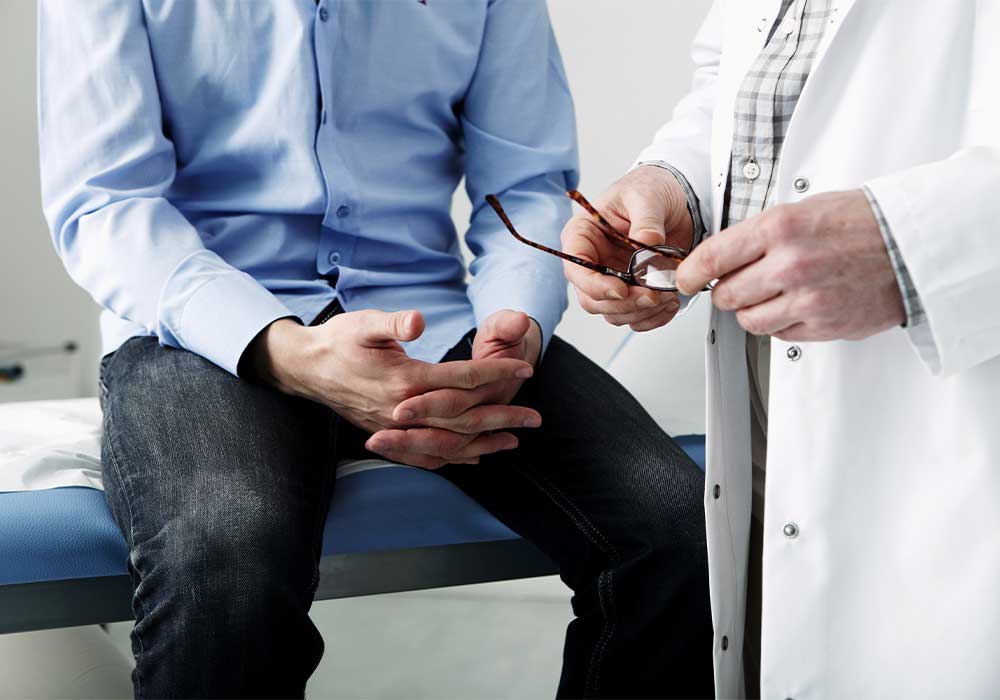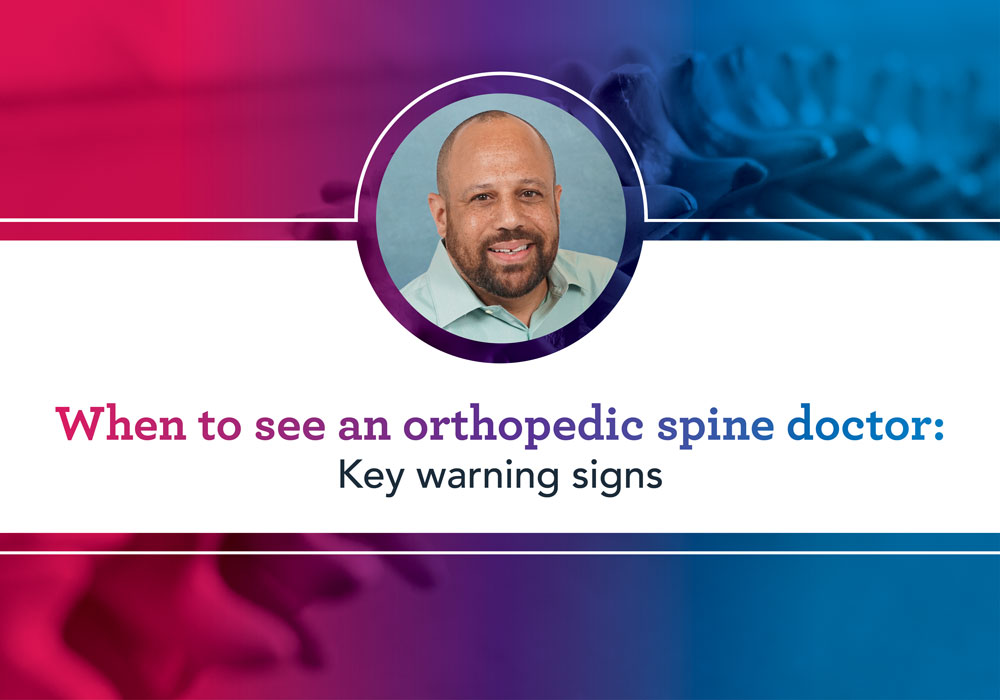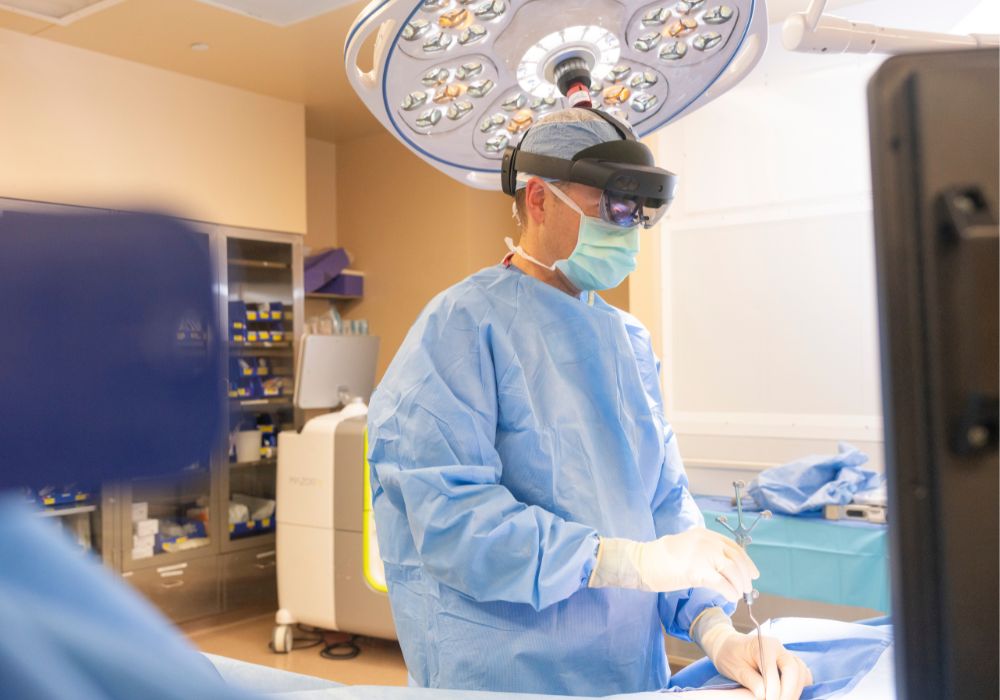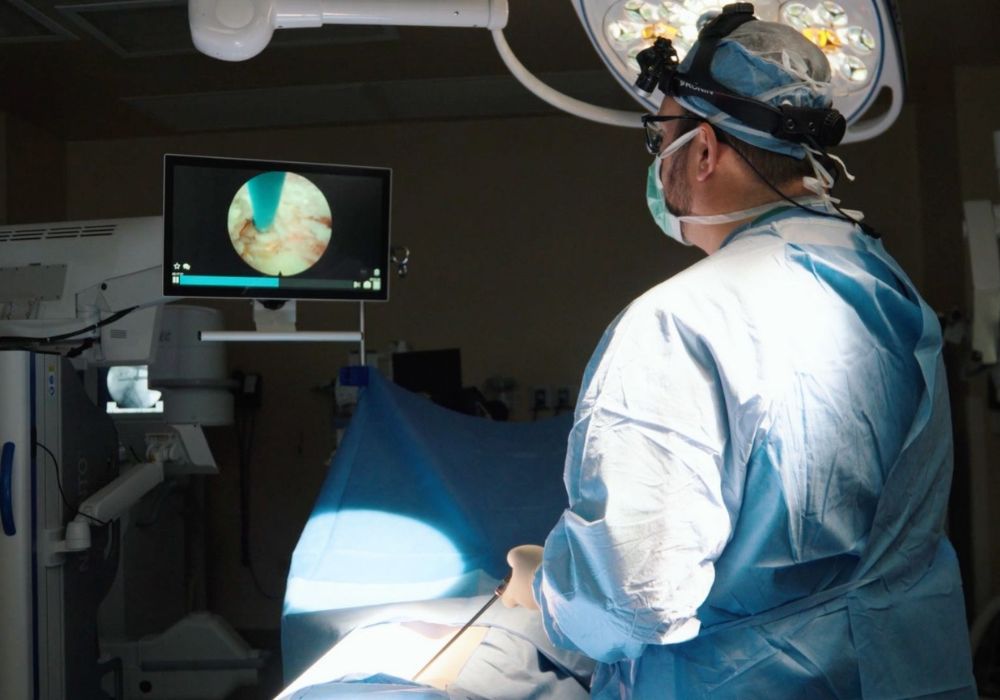Occasional back pain is a widespread problem. Though it often will go away on its own, knowing when to see a doctor for back pain can be tricky. You might even wonder what the diagnosis process looks like, what happens during the different stages of treatment, and how likely it is that you’ll have to have surgery.
What are signs that your back pain is serious? How do you know if you should see a doctor right away instead of waiting to see if the discomfort goes away with rest?
In this blog article, you’ll discover which symptoms you need to watch for and find out what to expect during the diagnosis and treatment process when you see a doctor for back pain.
Signs it’s time to see a back pain doctor
There are two types of patients who typically inquire about when to see a doctor for back pain:
- Patients who have been dealing with back pain for years. They may have even been treated by a doctor, therapist or chiropractor in the past but didn’t get relief.
- Patients that have had an injury or some other recent activity that caused increased pain which has worsened over a matter of weeks or months.
While back pain causes can differ, many of the symptoms associated with back pain will be similar across various conditions. Often these symptoms include:
- Muscle achiness in your back
- Muscle spasms
- Weakness
- Shooting or stabbing pain
- Pain that radiates down your leg
- Limited flexibility or range of motion of the back
- Numbness in your legs or feet
- Bowel or bladder problems (in severe cases)
Acute pain—often caused by an injury after falling or lifting something heavy—will typically start suddenly but last less than six weeks. Acute pain isn’t as common as chronic pain, and it can last more than three months.
Some conditions that are often linked to different kinds of back pain include:
- Muscle or Ligament Strains
- Bulging or Ruptured Discs
- Arthritis
- Skeletal Irregularities
- Osteoporosis
What to expect at your first back appointment
When deciding if and when to see a doctor for back pain, it can help to know what happens during the diagnosis process.
Physical examination
At your first back appointment, a spine specialist will ask questions about your medical history and have you describe your symptoms.
A specialist will also complete a physical examination of your back to figure out what is triggering your discomfort. They may push down on different areas to see where you’re having tenderness or pain. They will also check to see if you have any instability in your back.
Imaging
If your spine specialist doesn’t have imaging of your back or you’re a completely new patient, you may need an X-ray or CT scan to evaluate your condition thoroughly. If you’ve had a fall or other trauma, they will also check for signs of a fracture.
If your exam and basic forms of imaging don’t reveal what is wrong with your back, a spine specialist may order electromyography and a nerve conduction study. They may also recommend an MRI, which can help them “see” soft tissues like discs.
Based on your symptoms, exam, and what the imaging tests show, your specialist will make an assessment of your condition. If there is nothing abnormal, they will typically recommend a treatment plan that starts with back pain remedies that are proven to reduce aches and inflammation in many patients.
In more rare, emergency situations where a patient has a condition that is more serious (e.g., a patient is experiencing debilitating pain and weakness or losing control of their bowels or bladder), your back doctor will refer you to a pain management specialist or spine surgeon for help determining an appropriate solution.
The typical back pain treatment process
Most patients are treated non-operatively in stages. That’s because conservative approaches are often enough to improve quality of life and function when you have back pain.
Some of the most common back pain treatments include:
- Physical Therapy
- Non-Steroidal Anti-Inflammatory Drugs (e.g., Ibuprofen, Aspirin and Muscle Relaxants)
- Steroids (Taken Orally or Injected Into Your Spine)
- Nerve Blocks and Ablation
- Epidural Injections
- Joint Injections
- Braces
- Chiropractic Therapy
- Physical Therapy and Exercise
- Weight Control Measures
- Smoking Cessation
Physical therapy and exercise
In most cases, treatment for back pain starts with physical therapy and exercise. Many patients are pleasantly surprised at just how good they feel after making lifestyle changes to include regular exercise and physical therapy as part of their weekly routine.
Sometimes all a person needs is to learn the correct exercises to build their core strength and help with posture and modifications to their daily activities.
While physical therapy and exercise programs are proven to help with many cases of back pain, it can take about six weeks to notice any changes. Unfortunately, some people get discouraged after just a week or two, and many give up. It’s essential to stick with it and put in the effort to see real results.
Every small step toward better spine health is a good one. For someone that has been mostly sedentary, even just walking for a few minutes a day can help with back pain relief and overall wellness.
Medications and injections
If lifestyle changes, including physical therapy and exercise, don’t provide significant back pain relief, your specialist may recommend some combination of nerve-pain medicines, muscle relaxants, and injection therapies during the next stage of treatment.
Spine surgery
Unless it’s an emergency, spine specialists will only recommend surgery after you’ve tried all the non-operative treatment options and still haven’t had significant or lasting improvement. Whether or not you have surgery usually depends on your pain level, how long you’ve been in pain, the amount of disability you have and which treatments you’ve already tried.
Back surgery is always your choice. Your doctor will work with you to make sure you make an informed and educated decision.
Conditions commonly associated with back surgeries include (but are not limited to):
Back pain prevention
Prevention is the best form of treatment for back pain problems. Developing certain healthy habits and making specific lifestyle changes can sometimes help patients strengthen their bodies enough to reduce their chance of experiencing back pain.
Proactive things you can do to prevent back pain include:
- Regular exercise
- Proper lifting
- Healthy weight maintenance
- Avoiding smoking
- Proper posture
Setting realistic expectations
When deciding when to see a doctor for back pain treatment, it’s essential to go into your care with realistic expectations about what outcomes are possible. There are no quick fixes for most back conditions, and—in some cases—your pain may never entirely go away.
Pain is like an alarm bell that lets us know when to make a change or avoid doing certain things. A realistic treatment goal is to get your pain level back before your injury or condition develops.
That being said, there is a certain threshold of pain that can make your quality of life miserable, and that’s not normal. In those cases, surgery may be recommended to reduce your pain and manage your symptoms. Feeling no pain at all isn’t always possible or realistic, even after surgery.
Regardless of your type of condition or injury, treating back pain is rarely accomplished in one doctor’s visit. It’s generally a process that takes time and effort from doctors and patients.
Schedule an appointment
It can be challenging to know when to see a doctor for back pain, but you can trust the team at OrthoIndy to diagnose what’s causing your back pain and get you the relief you deserve.
Here, our non-operative spine doctors work alongside spine surgeons with the shared goal of improving your symptoms and helping you feel better.
Schedule online or call us to set up an appointment with one of our orthopedic specialists.
If your injury or condition is recent, you can walk right into one of our OrthoIndy Urgent Care locations for immediate care. No referral is needed for rehabilitation and physical therapy to see one of our physical therapists.

Get the Ultimate Guide to Back Pain Relief
Our comprehensive guide will help you understand back pain and its different causes, like sciatica, herniated disk, scoliosis, pinched nerves and more.





